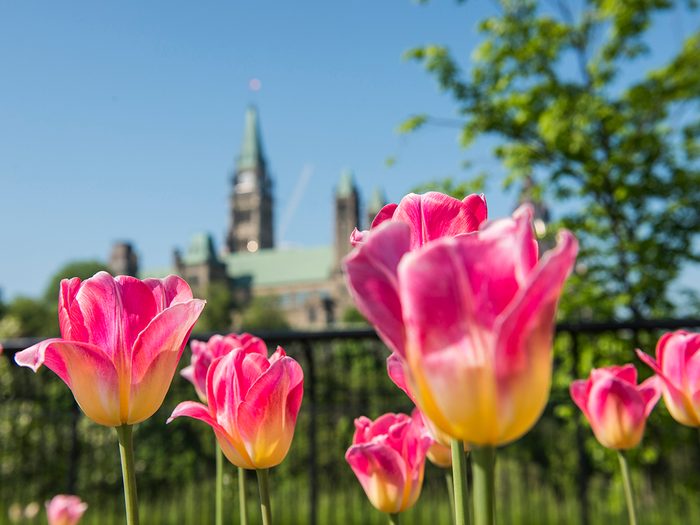
The Origins of the Canadian Tulip Festival
The Canadian Tulip Festival is surely the most colourful event in the country. This Ottawa-based celebration showcases more 100 tulip varieties, spread across 120 flower beds, amounting to 14,000 m² of blooms (or, in Canadian terms, enough to cover nine NHL arenas). And it all started as a gesture of heartfelt thanks.
During World War II, Canada was a safe haven for Dutch Princess Juliana and her children, including Princess Margriet, born at Ottawa’s Civic Hospital. In 1945, the Dutch government sent 100,000 tulip bulbs to Canada to express their gratitude. Princess Juliana followed suit, donating an additional 20,500 bulbs the next year. From these early gifts, a rich tradition was born.
The Canadian Tulip Festival marks its 71st anniversary in 2023, with a robust lineup of events. One of the highlights is a new “Tulips At Night” program. Solar-powered lighting will extend the viewing hours on select flower beds and free outdoor movies will play every night. Additionally, visitors will be able to explore a blacklight experience along the Dow’s Lake Boardwalk. Here, fluorescent inks and blacklights will come together to offer a new artistic interpretation of what the tulips mean to the city.
Before the tulips bloom, it’s time to brush up on your Tulip Festival trivia, from its fascinating roots to its modern-day claims-to-fame.
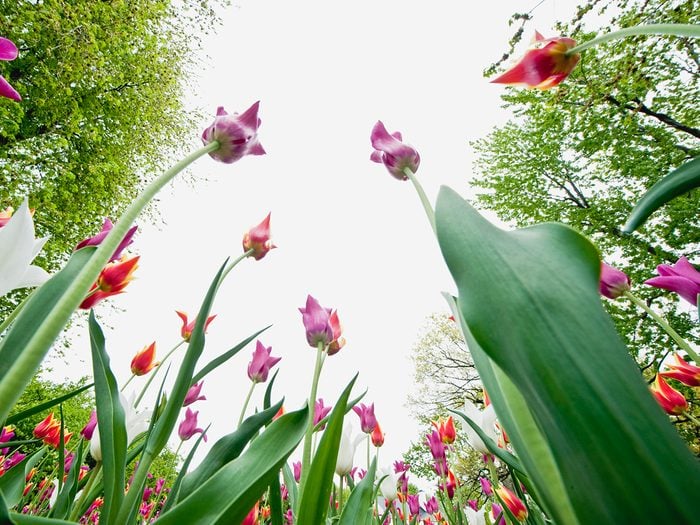
The first tulips were not gifted by royalty
Ottawa’s very first gift of tulip bulbs was donated from an English businessman, not Dutch royalty. Richard Seymour Cobley, who owned extensive commercial flower fields in England and Scotland, donated 83,000 tulips to Canada between 1941 and 1943 to show appreciation for Canadian support of the Netherlands during the war.
Here are the best Canadian history podcasts you should be listening to.
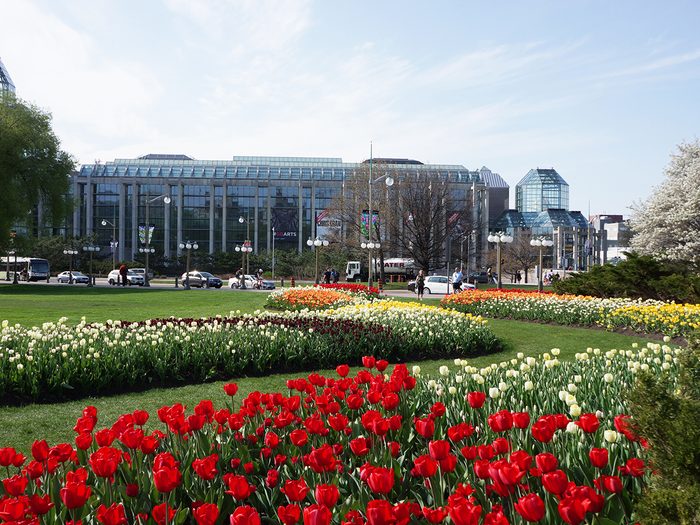
Over one million tulips bloom each year
Every year, Canada receives 20,000 tulip bulbs from the Netherlands. 10,000 are a gift from the Dutch Royal Family and 10,000 are from the Dutch Bulb Growers Association on behalf of the people of the Netherlands. The Canadian government buys bulbs each year from Canadian and Dutch distributors to augment the ones which are gifted. The “used” bulbs are donated to non-profit organizations and schools, composted or, in a few cases, left in the ground for a second season. Today, over one million tulips bloom during the festival.
Here are 10 places in Canada every Canadian needs to visit.
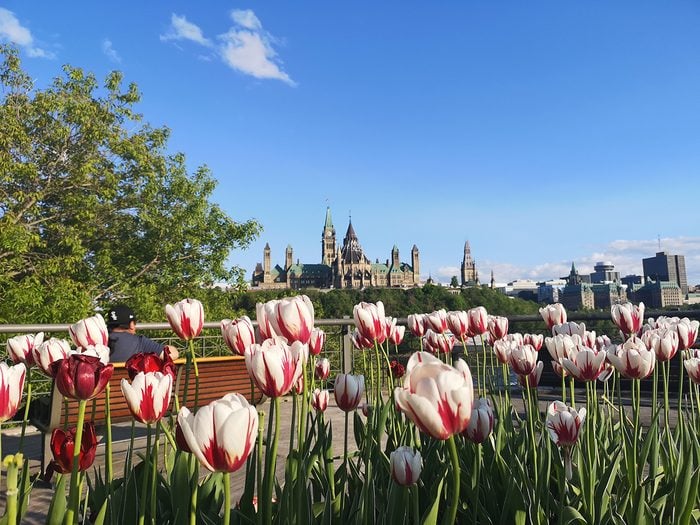
The idea for the Tulip Festival was conceived by a photographer
The Canadian Tulip Festival owes its origins to renowned photographer Malak Karsh. In 1949, Malak photographed tulips sent by Princess Juliana as they bloomed on Parliament Hill. In 1952, he suggested the idea of a tulip festival to the Ottawa Board of Trade and from there the idea blossomed—in more ways than one! Malak later became the honorary president of the Canadian Tulip Festival until his death in 2001.
Add these great day trips from Ottawa to your itinerary.
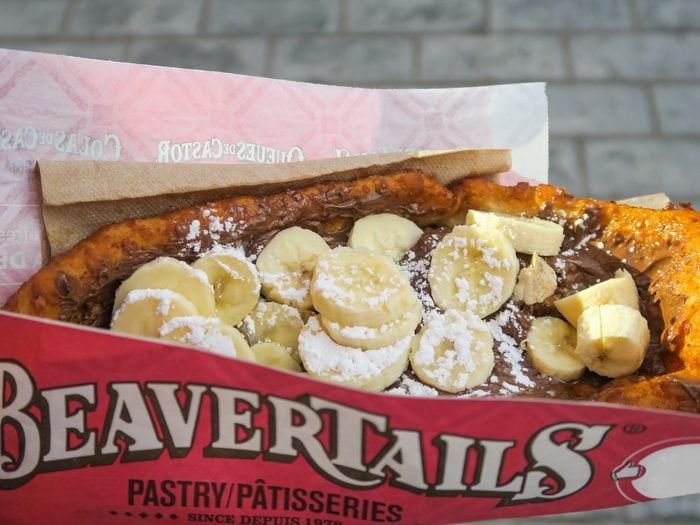
You can enjoy the tulips…and dessert
Presently, the Festival’s ‘Directors Emeritis’ are Grant and Pam Hooker. These community leaders are famous for pioneering another Ottawa symbol, the BeaverTails pastry. This oblong, deep-fried dough is often served drenched in cinnamon and sugar and is available across Ottawa, including near the main Tulip Festival sites.
Discover 10 must-try Canadian dishes—and the best places to find them.
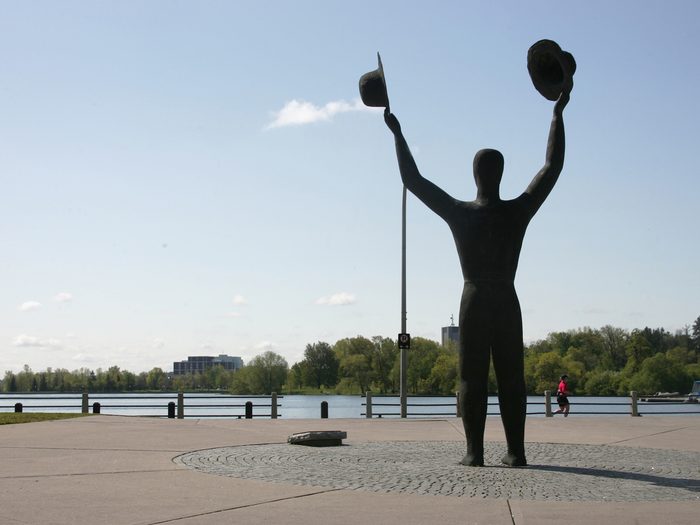
It’s a symbol of friendship between Canada and the Netherlands
There are more than 300,000 flowers in the largest set of beds, located in Commissioner’s Park near Dow’s Lake. Visitors who can tear their eyes away from the blooms will notice a unique statue of a man raising his arms, a hat in each hand. This piece, entitled The Man With Two Hats, has a twin, with the second statue located in Apeldoorn in the Netherlands. The piece, the work of Dutch artist Henk Visch, celebrates the connection between Canada and the Netherlands and reflects on the cost of war. Princess Margriet unveiled the Ottawa statue in 2002, two years after she attended the dedication of the Apeldoorn piece.
Here are 20 mind-blowing artifacts you’ll find in Canadian museums.
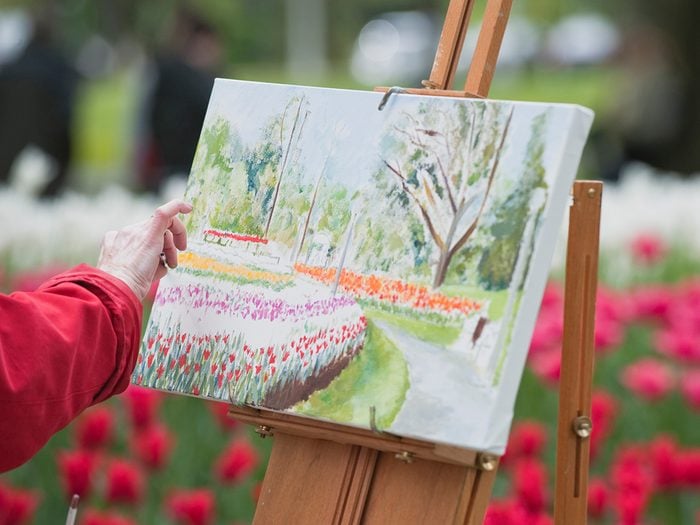
Tulips gifted by the Netherlands are planted in special gardens
Every year, the tulips gifted by the Netherlands are placed in two special flower beds. One is at the Ottawa Hospital’s Civic Campus, where Princess Margriet was born. In fact, Princess Juliana requested the location when she sent her very first bulbs. The other site, in Commissioner’s Park, is aptly named the Queen Juliana Gift Bed.
Check out 10 historical landmarks every Canadian should visit.
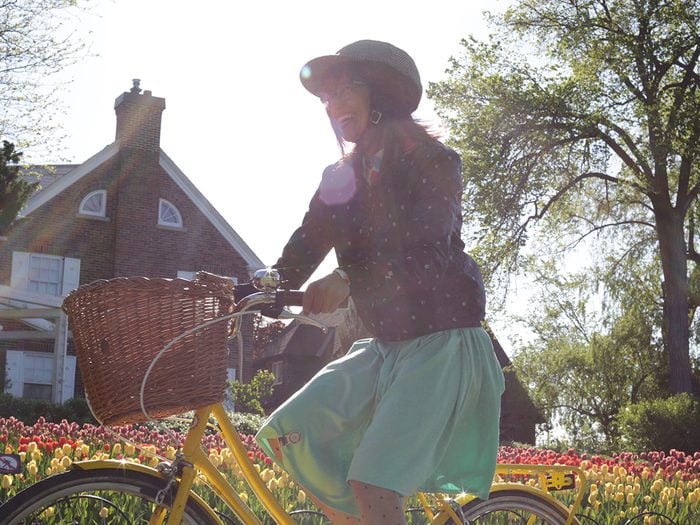
Tulips can also be found at the church
There is a third tulip bed, hidden in plain sight, which houses bulbs provided by the Netherlands. Every year, St. Andrew’s Presbyterian Church receives 100 bulbs from the Dutch Embassy, which, on occasion, have been delivered by the ambassador or by visiting Dutch students. Princess Margriet was christened in St. Andrew’s on June 29, 1943, and the congregation celebrates this special connection every year.
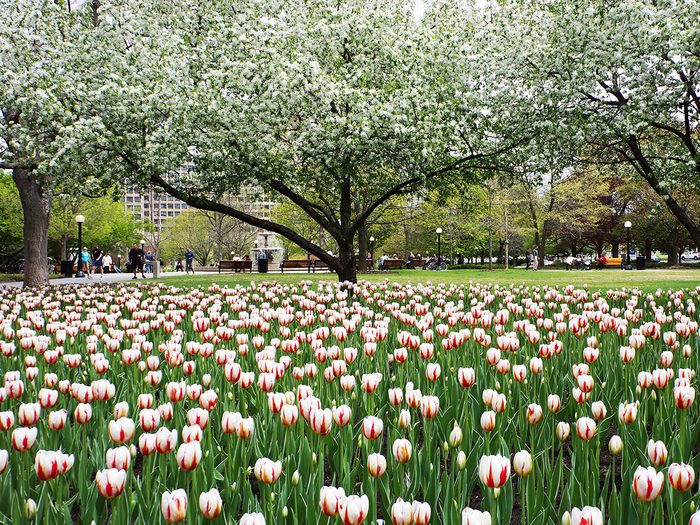
The Dutch ambassador is invited to celebrate the festival
Elizabeth Phillipson, an Elder of St. Andrew’s and volunteer archivist, says: “To this day, the Dutch ambassador is invited to come to worship with us on a Sunday in May (around Dutch Liberation Day) most years, to read the scripture lesson and meet the congregation (which swells that Sunday quite a bit with many from the Dutch community in Ottawa). We still hold that connection closely in our hearts, even as our congregation is now made up of over 50 different nationalities.”
Check out the most stunning botanical garden in every province.
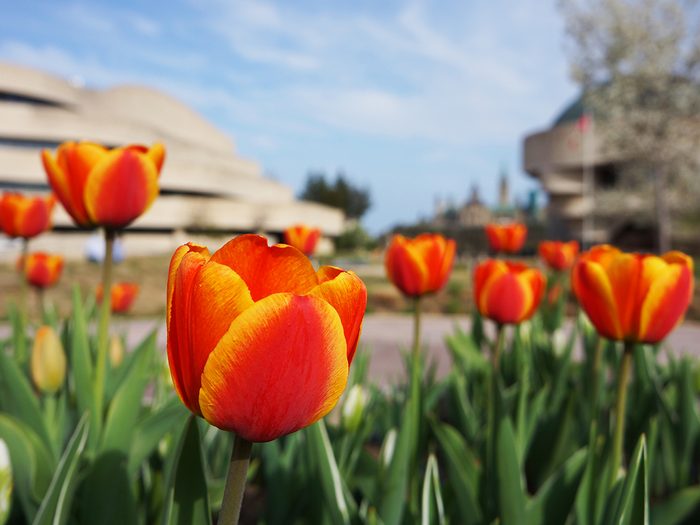
The tulip is the official flower of Ottawa
In 2001, the tulip became the official flower of the City of Ottawa. However, not all of the Canadian Tulip Festival’s gardens are located in Ottawa. In the city of Gatineau, you can find “Malak’s Bed” by the Museum of History. With the Ottawa River and Parliament buildings in the background, this flower bed mirrors one of Malak’s most famous photos, which appeared on a Canada Post stamp. There’s an additional tulip garden in Gatineau’s Montcalm-Taché Park.
Here’s what winter in Ottawa looks like.
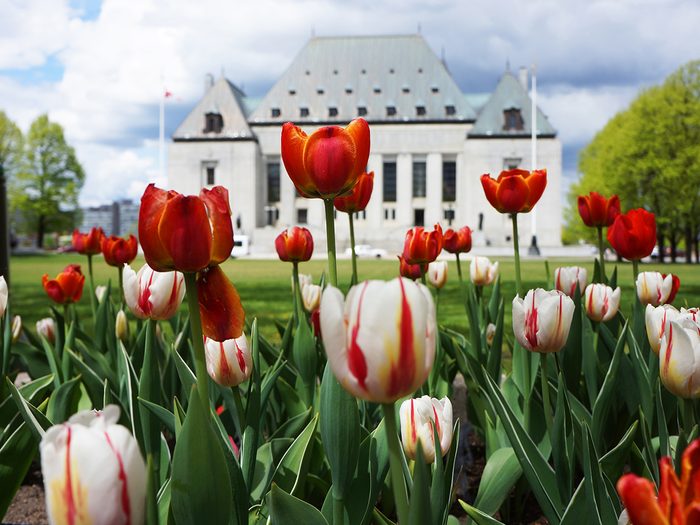
The Dutch royal family continues to have a close relationship with Canada
Princess Margriet’s relationship with Ottawa remains strong. She has returned to the city on several occasions, including in 2002 to mark the 50th anniversary of the Tulip Festival. In the spring of 2015, a new sculpture was unveiled to celebrate the 70th anniversary of the liberation of the Netherlands. Entitled Princess Tulip Sculpture, this piece by Canadian artist Laura Brown-Breetvelt depicts Princess Margriet as a baby, held by her mother and surrounded by tulips.
Can’t make it to this year’s Tulip Festival? These stunning pictures of tulips are the next best thing.